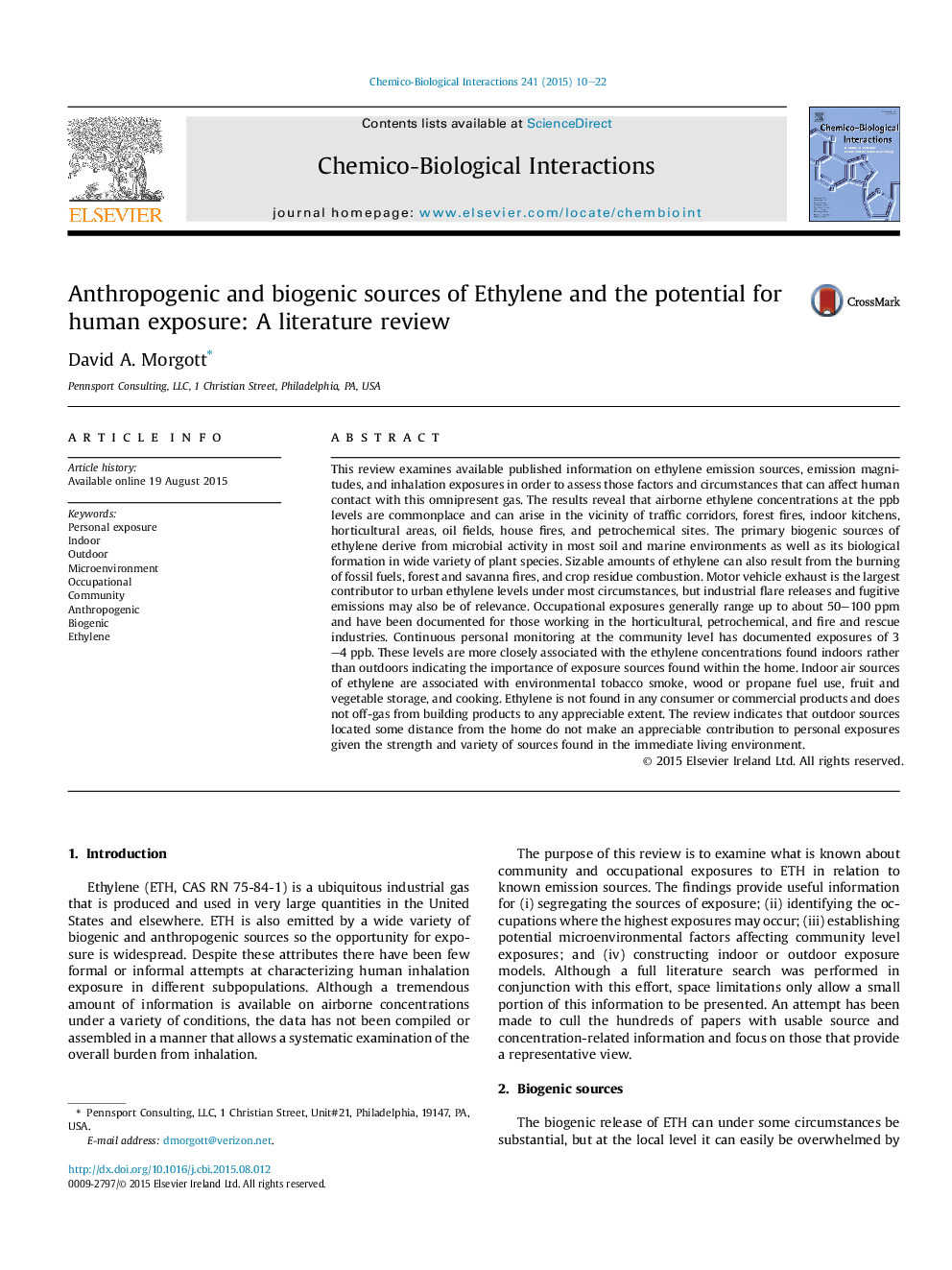| Article ID | Journal | Published Year | Pages | File Type |
|---|---|---|---|---|
| 5847728 | Chemico-Biological Interactions | 2015 | 13 Pages |
Abstract
This review examines available published information on ethylene emission sources, emission magnitudes, and inhalation exposures in order to assess those factors and circumstances that can affect human contact with this omnipresent gas. The results reveal that airborne ethylene concentrations at the ppb levels are commonplace and can arise in the vicinity of traffic corridors, forest fires, indoor kitchens, horticultural areas, oil fields, house fires, and petrochemical sites. The primary biogenic sources of ethylene derive from microbial activity in most soil and marine environments as well as its biological formation in wide variety of plant species. Sizable amounts of ethylene can also result from the burning of fossil fuels, forest and savanna fires, and crop residue combustion. Motor vehicle exhaust is the largest contributor to urban ethylene levels under most circumstances, but industrial flare releases and fugitive emissions may also be of relevance. Occupational exposures generally range up to about 50-100Â ppm and have been documented for those working in the horticultural, petrochemical, and fire and rescue industries. Continuous personal monitoring at the community level has documented exposures of 3-4Â ppb. These levels are more closely associated with the ethylene concentrations found indoors rather than outdoors indicating the importance of exposure sources found within the home. Indoor air sources of ethylene are associated with environmental tobacco smoke, wood or propane fuel use, fruit and vegetable storage, and cooking. Ethylene is not found in any consumer or commercial products and does not off-gas from building products to any appreciable extent. The review indicates that outdoor sources located some distance from the home do not make an appreciable contribution to personal exposures given the strength and variety of sources found in the immediate living environment.
Keywords
Related Topics
Life Sciences
Environmental Science
Health, Toxicology and Mutagenesis
Authors
David A. Morgott,
